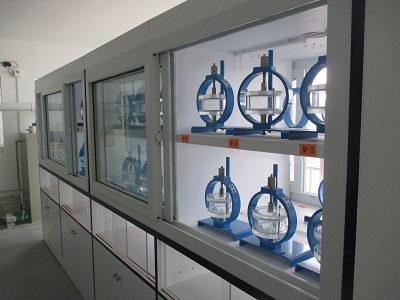corrosion test![]()
Valve detection![]()
Metallographic analysis![]()
component analysis![]()
Mechanical test![]()
failure analysis![]()
Nondestructive flaw detection![]()

2016-11-11 Rongda test 2676 times

Detection Purpose: The ability of anti-hydrogen embrittlement and hydrogen-induced cracking was tested
Detection range: Valves, flanges, oil pipelines, boilers, liquefied gas tanks and other pressure vessels, metal and o
Petrol in the oil refining industry stable distillation tower condenser, hydrodesulfurization unit of finished product cooler, stripping tower overhead condenser and oil field sets the place such as pipeline, because of carbon steel and low alloy steel exposed to the environment, containing hydrogen sulfide corrosion and generate hydrogen penetration in steel, local accumulation, in the steel rolling direction for the cracking phenomenon, known as the hydrogen induced cracking, also show the bubbling. Hydrogen sulfide is one of the most corrosive harmful media in petroleum and natural gas. When used in wet hydrogen sulfide environment, hydrogen sulfide can cause hydrogen bubble (HB), hydrogen-induced cracking (HIC) and stress-oriented hydrogen-induced cracking (SOHIC) in carbon steel. Hydrogen-induced cracking (HIC) occurs when hydrogen corroded into steel in acidic environment such as hydrogen sulfide.Mechanism of hydrogen-induced cracking: when the steel is immersed in the environment containing hydrogen sulfide, the hydrogen generated by corrosion will penetrate into the steel, and the atomic hydrogen will diffuse to the interface of non-metallic inclusions, etc., and turn into molecular hydrogen in its defect place, which will increase the inner pressure of the cavity.1) hydrogen embrittlement: after the hydrogen atoms generated in various cases penetrate into the steel directly, the bonding force between the steel grains will be reduced, resulting in the steel's extensibility, end face shrinkage reduction and strength change. Hydrogen embrittlement theory: a cathode reaction corresponding to the anode reaction occurs at the crack tip. The resulting hydrogen or processed hydrogen enters the steel causing hydrogen cracking.2) hydrogen corrosion: hydrogen reacts with carbide in the steel to produce methane, which cannot be diffused out of the steel and gathers in the grain to form local high pressure, causing stress concentration, and then causing micro-cracks or bubbles in the steel.
Next article: NO!